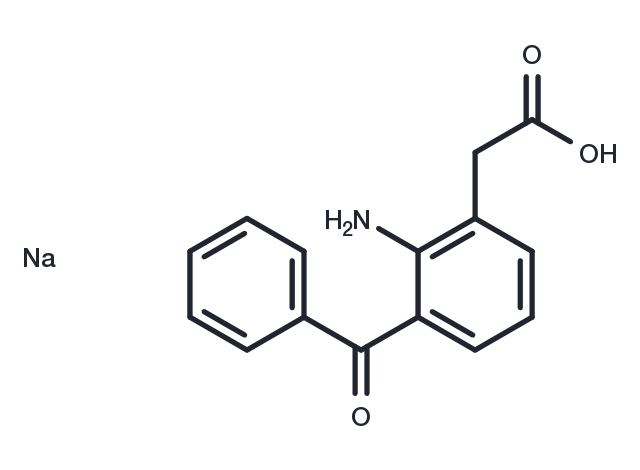Powder: -20°C for 3 years | In solvent: -80°C for 1 year


Amfenac is a nonsteroidal anti-inflammatory drug. Amfenac also has acetic acid moiety.

| Pack Size | Availability | Price/USD | Quantity |
|---|---|---|---|
| 25 mg | Inquiry | $ 1,520.00 |
| Description | Amfenac is a nonsteroidal anti-inflammatory drug. Amfenac also has acetic acid moiety. |
| Synonyms | AHR5850, AHR 5850 |
| Molecular Weight | 277.26 |
| Formula | C15H12NNaO3 |
| CAS No. | 61941-56-8 |
Powder: -20°C for 3 years | In solvent: -80°C for 1 year
DMSO: Soluble
You can also refer to dose conversion for different animals. More
bottom
Please see Inhibitor Handling Instructions for more frequently ask questions. Topics include: how to prepare stock solutions, how to store products, and cautions on cell-based assays & animal experiments, etc.
Amfenac sodium 61941-56-8 AHR5850 AHR-5850 AHR 5850 inhibitor inhibit
